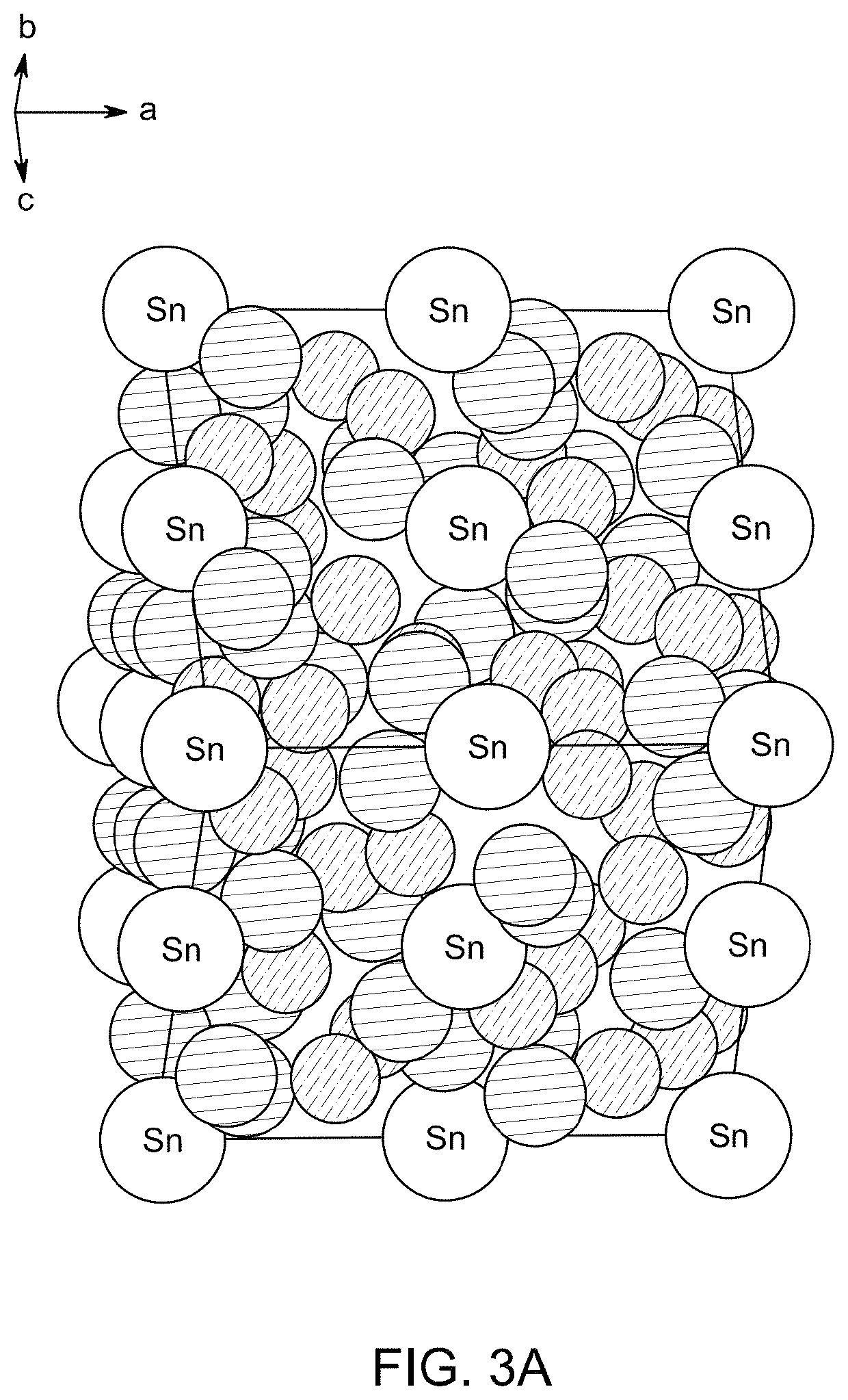Graphene oxide and cobalt tin oxide nanocomposite and method of use
- Summary
- Abstract
- Description
- Claims
- Application Information
AI Technical Summary
Benefits of technology
Problems solved by technology
Method used
Image
Examples
example 1
Materials and Methods
[0143]SnCl4.5H2O, CoCl2.6H2O and pellets of sodium hydroxide (NaOH) were used for the synthesis of nanocubes. Graphite powder, potassium permanganate (KMnO4), sodium nitrate (NaNO3), sulfuric acid (H2SO4 98%), and hydrogen peroxide (H2O2) were used for the synthesis of graphene oxide. Ethylene glycol was used for the synthesis of the nanocomposite. All chemicals were analytical grade and used without further purification. Deionized water was used throughout the experimental work.
Synthesis of Nanoparticles
[0144]Cobalt tin oxide nanoparticles were synthesized by a simple hydrothermal technique. In a typical approach, 0.3 g (SnCl4-5H2O) and 0.6 g (CoCl2.6H2O) with an atomic ratio of 1:2 were mixed in 30 mL of deionized water under constant magnetic stirring for 30 minutes at 500 rpm. After some time, they were completely dissolved. Then 7 mL of a 4 M NaOH solution was added slowly into the solution. For further purification, the solution was treated in a Teflon®-li...
example 2
Characterization
[0147]Powder XRD patterns of the nanoparticles were obtained from a Rigaku D / max Ultima III X-ray diffractometer with a radiation source of Cu-Kα (wavelength=1.54174 Å) at 45 kV and 60 mA at a scanning step size of 0.020° in the 20 range 10.015-80.012°. The XRD results were analyzed with the help of MATCH 3 software and the lattice parameters were calculated. The structural model was constructed on VESTA software. Scanning electron microscopic calculations were performed at 250 Quanta with a pressure of 70 (Pa) and 30 kV power. The patterns showed the cubic crystal structure of these nanoparticles. The catalytic reduction and absorption spectrum of the synthetic dye RB 5 was examined by a Halo DB 20 double beam spectrophotometer with the wavelength range of 400-700 nm. Investigation of the fuel properties by adding the newly synthesized graphene based tin cobalt oxide nanocomposite into the fuel to check the effect on the fuel efficiency was carried out in which the ...
example 3
Results and Discussion—EDX Analysis
[0148]Energy Dispersive X-ray (EDX) analysis of the synthesized nanocomposite elements is shown in FIG. 1. The EDX spectrum describes the presence of Co, oxygen, tin, and carbon atoms in the newly synthesized C16Co4O16Sn nanocomposite. It can be seen from Table 1 that the atom percentage of Co is more than half of all the elements present in the nanocomposite.
[0149]
TABLE 1EDX elemental microanalysis (atom %) of the C16Co4O16Sn nanocomposite sampleSampleCo (%)Sn (%)O (%)C (%)GO based cobalt tin54.5514.4516.6314.27oxide composite
PUM
| Property | Measurement | Unit |
|---|---|---|
| Fraction | aaaaa | aaaaa |
| Fraction | aaaaa | aaaaa |
| Fraction | aaaaa | aaaaa |
Abstract
Description
Claims
Application Information
 Login to View More
Login to View More - R&D
- Intellectual Property
- Life Sciences
- Materials
- Tech Scout
- Unparalleled Data Quality
- Higher Quality Content
- 60% Fewer Hallucinations
Browse by: Latest US Patents, China's latest patents, Technical Efficacy Thesaurus, Application Domain, Technology Topic, Popular Technical Reports.
© 2025 PatSnap. All rights reserved.Legal|Privacy policy|Modern Slavery Act Transparency Statement|Sitemap|About US| Contact US: help@patsnap.com



